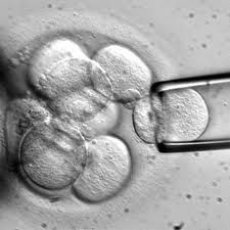New publications
Culturing stem cells in the lab will overcome immune rejection of organs
Last reviewed: 30.06.2025

All iLive content is medically reviewed or fact checked to ensure as much factual accuracy as possible.
We have strict sourcing guidelines and only link to reputable media sites, academic research institutions and, whenever possible, medically peer reviewed studies. Note that the numbers in parentheses ([1], [2], etc.) are clickable links to these studies.
If you feel that any of our content is inaccurate, out-of-date, or otherwise questionable, please select it and press Ctrl + Enter.

A study by researchers at the University of Texas Southwestern Medical Center, just published by Cell Press in the journal Cell Stem Cell, may help develop more promising therapeutic strategies for hematopoietic stem cell transplantation. Pre-cultivating these cells in the lab for about a week may help overcome one of the most difficult obstacles to successful transplantation: immune rejection.
Hematopoietic stem cells (HSCs) are the cells that give rise to all types of blood cells. Hematopoietic cell transplants are used to treat leukemia, lymphoma, and other cancers, as well as autoimmune diseases.
Bone marrow. Light micrograph of stem cells that give rise to blood cells. White blood cells are large and purple, red blood cells are pale, and platelets are small purple granules. Blood cells are continually being produced in the bone marrow because their lifespan is so short. Red cells, platelets, and all three types of white cells (granulocytes, lymphocytes, and monocytes) all come from a single ancestral cell, the multipotent stem cell. (Photo: Astrid & Hanns-Frieder Michler/Science Photo Library, P234/0030)
However, the lack of understanding of the interaction between hematopoietic stem cells and the recipient's immune system greatly complicates both stem cell research and the development of practical transplantology. There is a significant risk that the transplanted cells will not be accepted by the host organism, i.e. the new cells will be rejected by its immune system. Among the main problems of allogeneic transplantation are the low level of engraftment of donor grafts and the high risk of developing life-threatening graft-versus-host disease. Transplantation of purified allogeneic HSCs reduces the risk of the latter, but leads to a decrease in engraftment.
Although scientists know some of the reasons for such failures, many questions remain unanswered. "Resolving these problems will contribute to understanding the immunology of hematopoietic stem cells and other stem cells and will significantly advance practical transplantation," said study leader Dr. Cheng Cheng Zhang.
Dr. Zhang and his colleagues have already shown that human and mouse hematopoietic stem cells (HSCs) can be successfully grown in the laboratory and then used for transplantation. At the same time, certain changes are observed in many proteins expressed on the surface of such cells. Scientists were interested in whether such an “out-of-body experience” could also change the functional properties of HSCs and make them more suitable for transplantation.
Transplantologists are particularly interested in clinically relevant allogeneic transplants, which are transplants between genetically different individuals, including siblings and unrelated donor/recipient pairs. Dr. Zhang’s group transplanted both freshly isolated and lab-grown HSCs into mice and found that cells that had been in the lab for about a week were significantly less likely to interfere with the recipient’s immune system. Ex vivo cultured mouse hematopoietic stem cells successfully crossed the major histocompatibility complex barrier and populated the bone marrow of allogeneic recipient mice. Using an eight-day culture, the allografts were able to engraft by 40-fold.
The researchers decided to study the mechanism underlying this effect in more detail and found that both the increase in the number of HSCs and the culture-induced increase in the expression of the specific immune system inhibitor CD274 (B7-H1 or PD-L1) on the cell surface contributed to this increase.
“This work should shed new light on the immunology of hematopoietic stem cells and other stem cells and may lead to the development of new strategies for successful allogeneic transplantation,” Dr. Zhang concluded. “The ability to expand donor human HSCs in culture and transplant them into people genetically distant from the donors, while avoiding the development of graft-versus-host disease, will solve a major problem in the field.”

 [
[